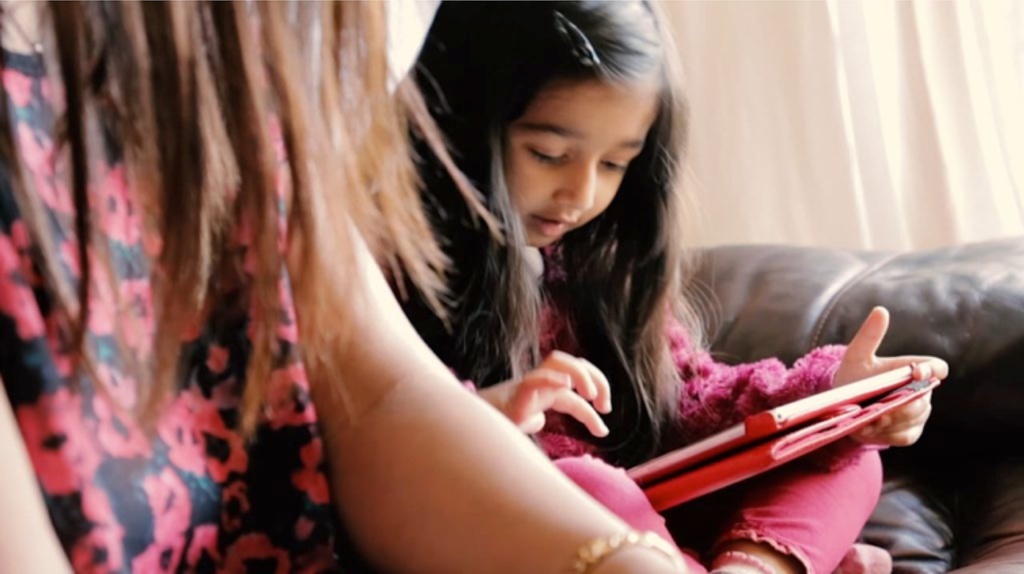
According to practitioners, using technology can support the early literacy development of pre-school children, including those children with special educational needs and disabilities (SEND).
More than half (55.1 per cent) of the early years practitioners who took part in the National Literacy Trust’s third annual early years literacy survey said that sharing stories on touchscreens can particularly help children with SEND to develop their early language, literacy and communication.1
However, the research shows that although access to technology has increased in nurseries, children’s centres and playgroups from 41.4 per cent in 2014 to 58.2 per cent in 2015, fewer early years practitioners say they use technology to look at or read stories with children (40.8 per cent in 2015 compared to 49.1 per cent in 2014). Of those who do use touch screens to share stories with children, only half (55 per cent) felt confident in doing so, compared to 82.2 per cent who are confident using books.
The power of technology
There are a range of reasons why early years practitioners may lack confidence using technology. These include practical concerns such as not knowing how to use a touchscreen, or doubts as to whether pre-school children shouldbe reading on screen. The rapid and continuing spread and development of technology in recent years has made it difficult for research to keep up with the impact of using it, particularly over the long term. This results in conflicting findings which can cause confusion among early years practitioners seeking guidance.
Their uncertainty is in sharp contrast to parents who are equally as confident using technology to read with their children as they are using books (74.1 per cent compared to 78.1 per cent). Almost all parents (97 per cent) who took part in our survey told us that their children had access to a device at home, with more than a third (38 per cent) of mums and dads using it to look at or read stories with their children during a typical week. It is worth noting that children from disadvantaged backgrounds use touchscreens to read more often each week than their peers, although they read printed stories less frequently.
Although technology alone does not make a difference to children’s learning, and is no substitute for adult interaction, touchscreens can play an important role in supporting early communication, language and literacy by offering new opportunities. Alongside books, the interactive nature and sensory stimulation of technology can help young children to learn in new ways. This needs careful planning by early years practitioners to achieve specific learning goals. Our research found that using technology can be particularly beneficial for developing the early literacy skills of certain groups of children, including boys and those with SEND. So, how can we ensure that technology is used well, by confident practitioners and busy parents, to support those children who need it the most?
